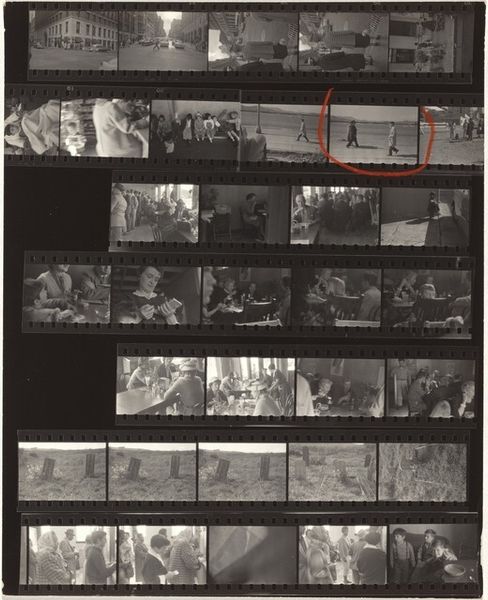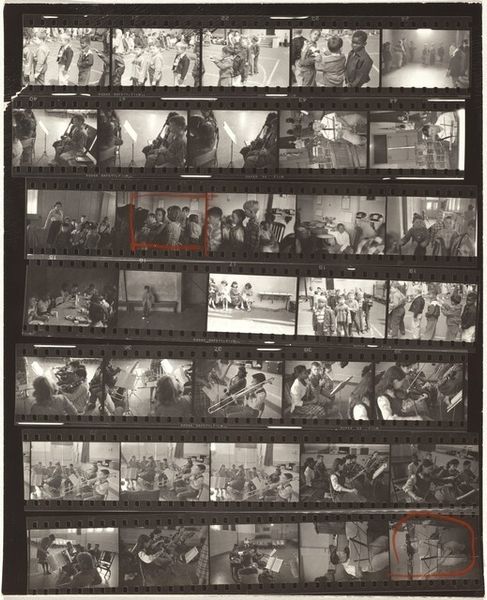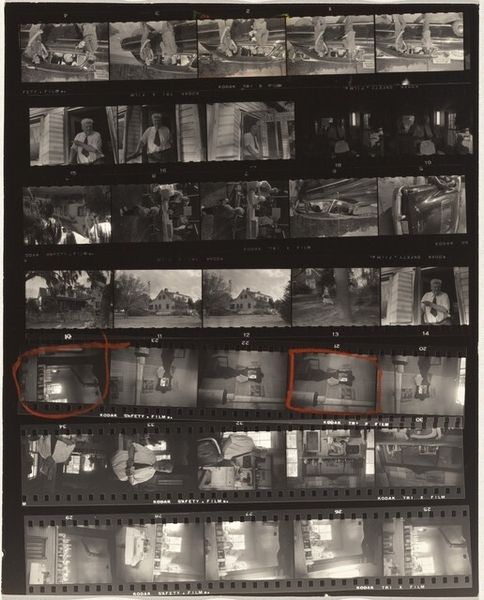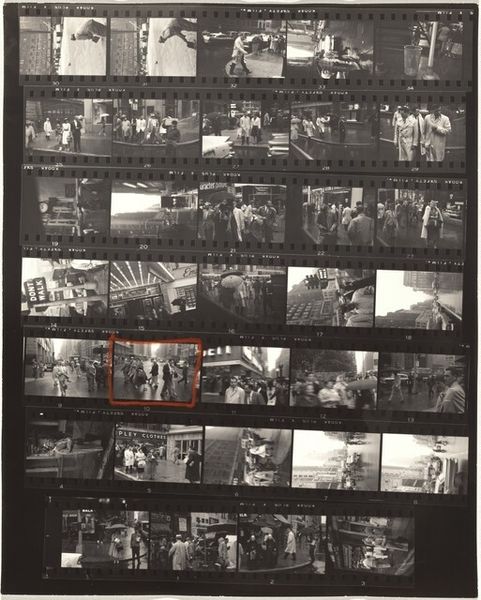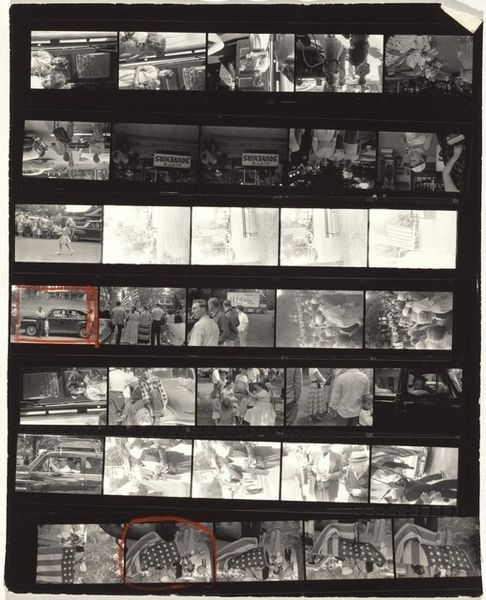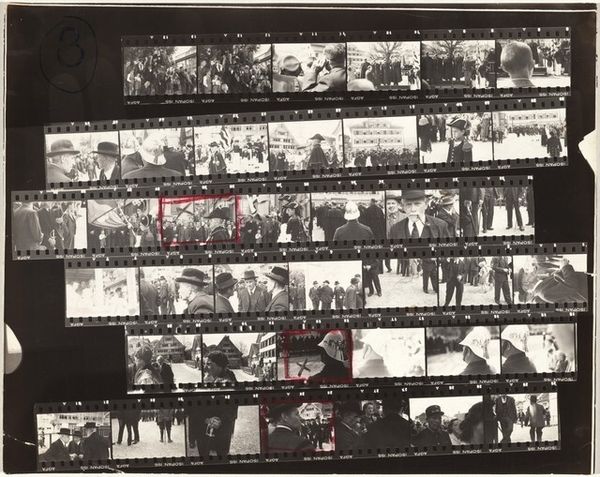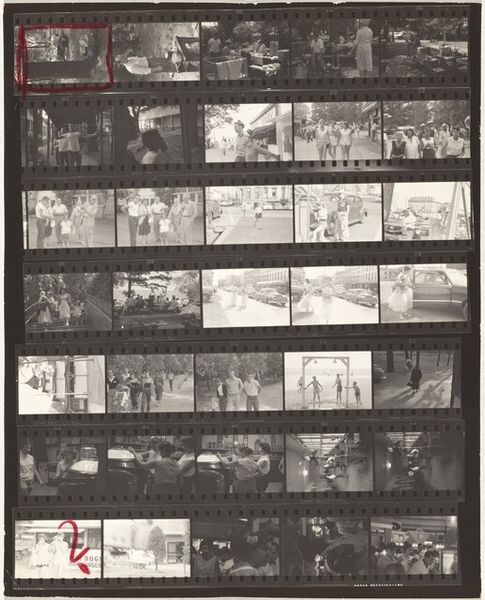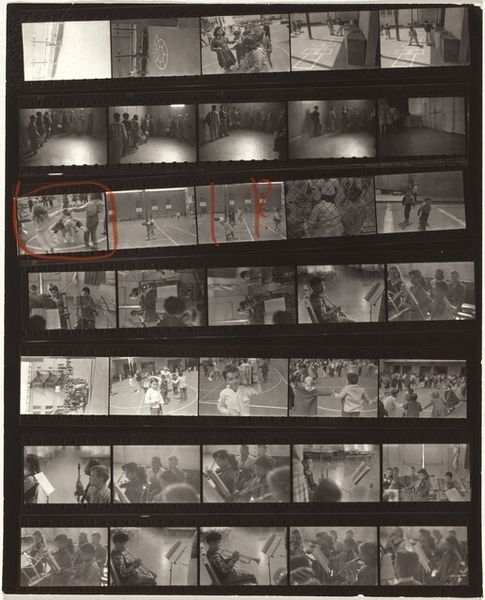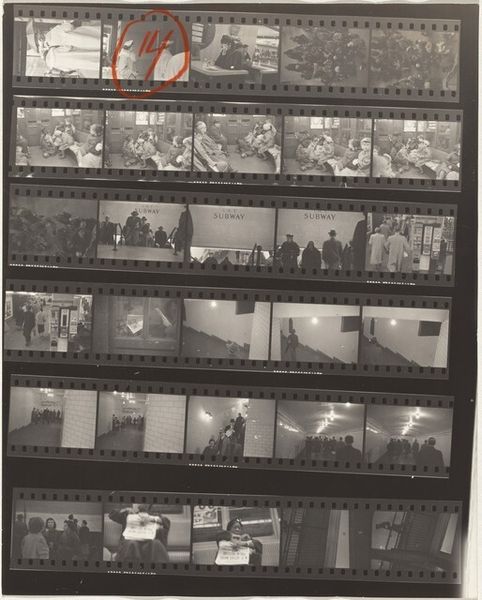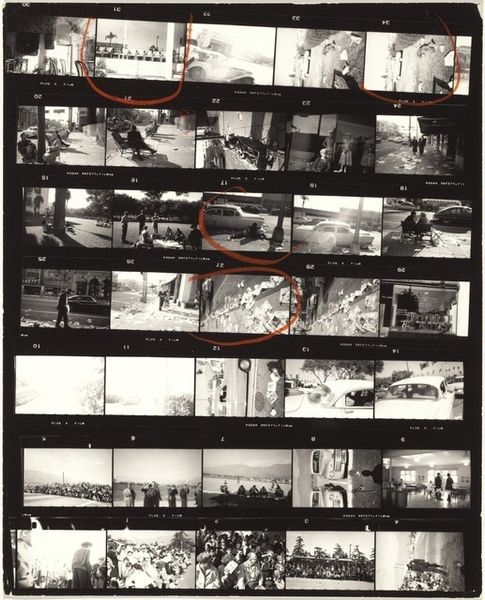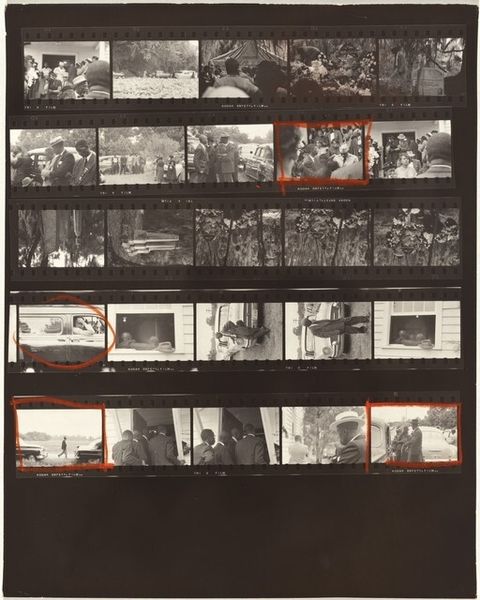
Dimensions: overall: 25.3 x 20.4 cm (9 15/16 x 8 1/16 in.)
Copyright: National Gallery of Art: CC0 1.0
Editor: Here we have Robert Frank's "Guggenheim 308--Scottsboro, Alabama," a gelatin-silver print from 1955. It's actually a whole contact sheet, which gives you all these little glimpses into…well, it’s almost voyeuristic! What do you make of this sprawling sheet of moments? Curator: Contact sheets such as this operate as primary visual texts, windows into the artist's mind at work. The sheer volume of images becomes its own symbol – the ceaseless search, the endless variations, mirroring the restlessness of postwar America and, significantly, the era's anxieties related to social tensions, and especially racial injustice in the American South, conveyed in several frames within the work. It's less about a single "perfect" image and more about the act of witnessing itself. How do these fragmented views contribute to the narrative Frank constructs? Editor: I guess by showing us all the options, even the less-than-perfect ones, Frank emphasizes the subjective nature of observation. Almost like he wants us to understand that "truth" is constructed, not simply found? Curator: Exactly. Consider how Frank uses shadows and fleeting expressions within the images. Do these motifs point toward something beyond the immediately visible? Editor: I think so. The grainy textures, the slightly blurred figures – it's all very raw, which speaks to a kind of uncomfortable honesty. By extension, Frank's choice of focusing on a specific place -- Alabama, at that particular time -- hints at historical unease, inviting reflections on the past's lingering effects. Curator: Indeed. The visual language—the repetition of subjects, the differing angles—it accumulates weight, acting almost as a cultural echo chamber. What remains with you most strongly? Editor: The fact that even in its fragmented form, it tells such a powerful and troubling story about a particular time and place, it’s almost journalistic. Curator: A fitting summation. It reminds us that photography has never simply reflected reality but has always actively shaped our understanding of it through cultural memory and historical inheritance.
Comments
No comments
Be the first to comment and join the conversation on the ultimate creative platform.
